
What's Good: Additional system memory helps general performance; trackpad and Wi-Fi are also welcome improvements.
What's Bad: More of a revision than an entirely new model. At $199, it's also way too expensive.
Verdict: If you're using an older BlackBerry, the Bold 9650 is worth considering. If you're working with the Tour 9630 or Curve 8500 series, it's not worth the jump.
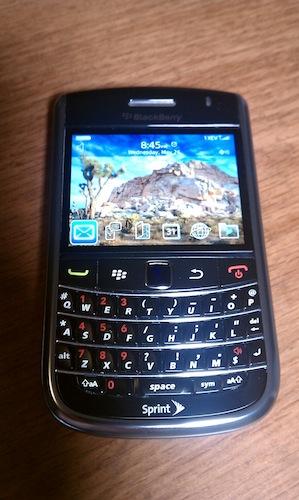
Shown off at WES 2010 in Orlando, the BlackBerry Bold 9650 has landed on Sprint, with a Verizon version in the works. Featuring Wi-Fi, a trackpad, additional system memory, and a few cosmetic changes, the device is more of a revision of the Tour 9630 than it is an entirely new model. Still, the improvements are welcome changes that die-hard BlackBerry users have been asking for. The real question - is the Bold 9650 worth purchasing if you're using a Tour 9630 or Curve 8500 series?
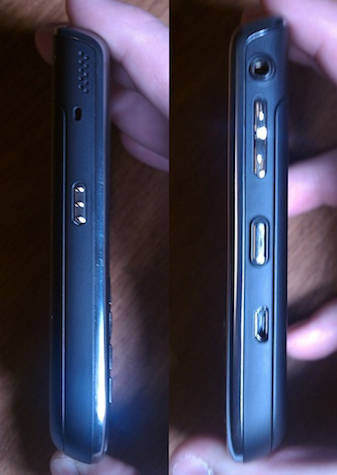
The Bold 9650 measures in at 4.41 inches tall by 2.44 inches wide by 0.56 inch thick and weighs 4.8 ounces, making it slightly heavier than the Tour (4.5 ounces). Continuing the trend, the screen on the Bold 9650 is beautiful. Measuring in at 2.4-inches in size, it offers 65,536 colors at a 480x360-pixel resolution. The left side of the Bold houses the speaker and a customizable button, while the right side sports the 3.5mm headphone jack, volume rocker, another customizable button, and the microUSB charging port. The lock and mute buttons can be found on top of the device. Cosmetically speaking, little has changed outside of the trackpad. Sprint opted for a rubberized battery door versus the glossy one found on the 9630, and the center houses a new design versus the carbon fiber design from before. "Bold" is now written above the 3.2-megapixel camera.
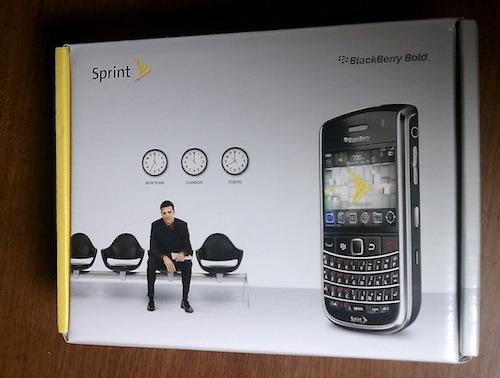
Though the exterior design has been modified slightly, the Bold 9650 ships in the same box as the Tour 9630 did. Sprint and RIM were generous with accessories - in the box, you'll find the device, battery, SIM card for international travel, USB cable, charger, swivel holster, AC adapter, 2 GB microSD card, earbuds, and instruction manuals. From a design perspective, the phone is virtually identical to the Tour 9630. Buttons are in nearly identical locations (save for the charger, which is just slightly higher), the chrome looks exactly the same, and the keyboard is the same. Overall functionality is a bit faster thanks to the 512 MB of internal memory.
As with the other trackpad-equipped BlackBerrys, using the new navigation method is flawless. I can't even begin to count how many trackball issues I've seen over the past few years, and the addition of the trackpad completely removes the problem. The trackpad is always fluid, and I've had no issues to date with it.
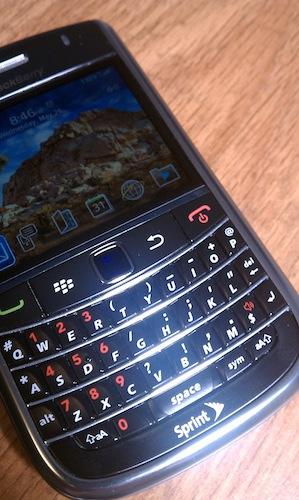
The keyboard is a bit of a mixed bag for me. Though it looks nearly identical to the QWERTY on the Tour, I've found that the keys are a bit smaller and the row that houses the space bar has shrunk in size. What's more, it you place your finger on the trackpad and move from right to left, the keyboard appears to be domed (right around the trackpad). It's a strange feeling - it's as if they packed a bunch of stuff under the keyboard, and tried to cram the keyboard over it. As a result, using the keyboard makes me feel like it's going to pop off and motherboard components are going to go everywhere. Over the course of a few days, I got used to the keyboard, but was never able to type as quickly as I did on the Bold 9700, 9000, and Tour 9630.

The Bold 9650 offers the standard music player found in BlackBerry OS 5.0. Offering a progress bar along with the option to shuffle, repeat, or add to playlist, it's simplistic and easy to use. The speaker worked well, though the actual speaker placement was a bit frustrating at times. When typing on the device, I found that my finger constantly blocked the speaker, making music and ringtones muffled. The device offers a 3.2-megapixel camera, and in my testing, pictures were decent. Like BlackBerrys of the past, there is a shutter lag, making it difficult to take pictures of moving objects. The device also supports video recording.
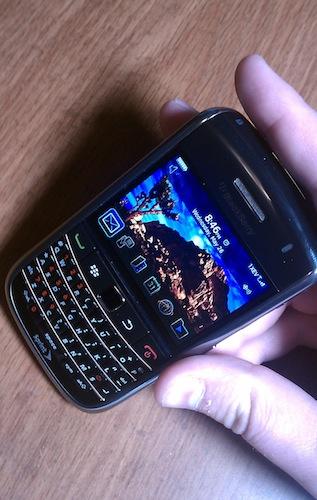
I've been working with the Bold in the Charlotte market, and call quality has been very good. Callers said that audio sounded good, and I was able to hear them just fine as well. Speakerphone was loud and clear, and worked without issue in a busy coffee shop. Additionally, I paired the Plantronics Voyager Pro Bluetooth headset to the device without issue. In addition to CDMA, the Bold 9650 supports the GSM 850/900/1800/1900 and WCDMA 2100 MHz bands, meaning that the device can be used in numerous countries across the world.
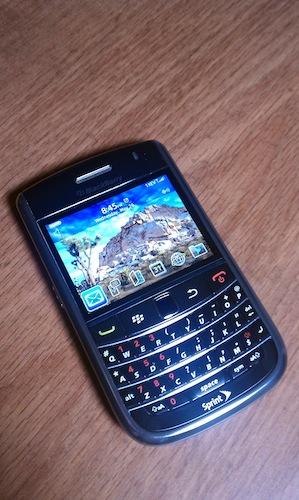
As with many of Sprint's smartphones, the Bold offers EVDO (3G) and A-GPS. The Bold also ships with Sprint TV, Sprint Navigation, NASCAR Sprint Cup Mobile, and a plethora of other Sprint-themed programs. Through the BlackBerry App World (installed), users can download a variety of additional applications. While somewhat functional, I was disappointed by the web browsing experience on the device. Here's to hoping that RIM's upcoming WebKit browser provides a better experience.
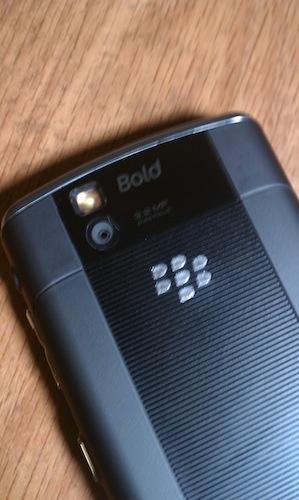
For a CDMA BlackBerry, the 9650's battery life is decent. Though estimated talk time is five hours, I was able to use the device continuously for just under four hours before it shut down. With moderate to heavy use including calling, text messaging, instant messaging, browsing the web, use of Sprint Navigation, and use of Sprint TV, I was able to make it just over one day before the device powered down. Though it offers a smaller screen, battery life is slightly better than media-centric devices like the Nexus One, Incredible, and DROID.
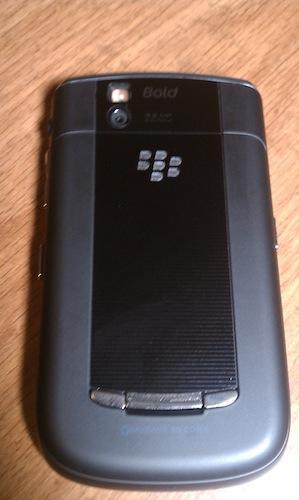
The BlackBerry Bold 9650 is a nice addition to RIM's CDMA lineup. Strong signal strength, combined with decent battery life and international capabilities will make for a great device for any individual that travels regularly. Despite that, it's more of a revision than it is an upgrade, so if you're using a Tour 9630, Curve 8500 series, or Bold 9700, the Bold 9650 isn't anything new. What's more, at $199.99, it runs a dangerous risk of being flanked by the EVO 4G and iPhone 3GS.